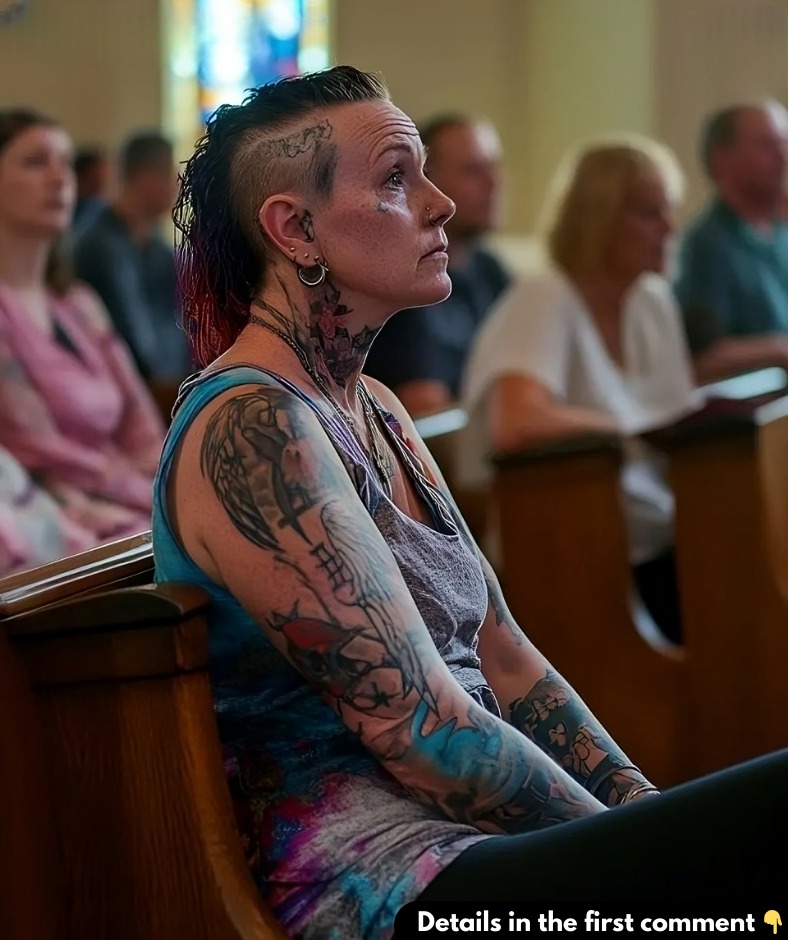Last Sunday, I experienced an unexpected moment that made me question some long-held beliefs. As I walked into the church, I noticed a woman in her 40s with visible tattoos and multiple piercings. Growing up, I was taught that church was a place of reverence where modesty and traditional attire were expected as signs of respect. Her appearance caught me off guard and made me wonder: are my ideas about “appropriate” church clothing still relevant in today’s world? Do we even need to have expectations for how people dress in places of worship?

Reexamining Traditional Views on Church Attire
Seeing this woman’s bold style made me reflect on how I’ve been taught to view church attire. After the service, I politely mentioned that her appearance seemed unconventional for church and suggested that a more conservative look might be more fitting. Her response? “How I look has nothing to do with you.” This left me reflecting on whether my discomfort stemmed from outdated beliefs rather than any real issue with her clothing choices.
I realized that I might still be holding onto a rigid idea of what “proper” church attire looks like. In a world where self-expression is becoming more important, is it fair to expect everyone to follow the same dress code? Maybe it’s time to rethink what “appropriate” church attire really means in today’s society.
Should There Be a Dress Code for Church?
Many of us grew up with the idea that church meant dressing conservatively—modest dresses, suits, and ties were the norm. These unspoken rules helped create a sense of respect and reverence for the sacred space. However, as times have changed, so have our perceptions of what’s acceptable. Tattoos, piercings, and unique fashion choices are now seen as forms of self-expression rather than rebellion.
This raises the question: should there still be a dress code for church? For some, dressing modestly is a way to show respect for the sacredness of the space. But for others, outward appearance shouldn’t determine someone’s ability to worship or belong. Isn’t church supposed to be about acceptance, compassion, and unity—values that welcome everyone, no matter how they look?
Embracing Diversity in Worship Spaces
Churches are meant to be places of unity and inclusion. If we focus too much on how people look, we risk losing sight of the true purpose of the church: to bring people closer to God and to one another. Judging someone based on their tattoos or piercings might prevent us from connecting with them on a deeper level and learning from their unique story and spiritual journey.
It’s important to remember that everyone brings their own personal history to church. Tattoos, piercings, and nontraditional clothing often reflect an individual’s life journey, struggles, and triumphs. By focusing solely on appearances, we may miss out on the rich diversity of stories people carry with them—stories that could broaden our own understanding of faith and life.
Finding the Balance: Tradition and Personal Expression
While embracing individuality is essential, there is also value in maintaining a sense of respect and decorum in church. For some, covering tattoos or dressing modestly is a way of honoring traditions they grew up with. It acknowledges the feelings of those who might feel uncomfortable with casual attire or more visible tattoos. At the same time, each person’s relationship with their faith is unique. For some, dressing up traditionally connects them spiritually, while others may feel more authentic when they can express themselves freely.
Striking a balance between honoring tradition and allowing for personal expression may help foster a more inclusive worship environment where everyone feels respected.
Building Mutual Respect in Faith Communities
The solution may lie in fostering mutual respect rather than enforcing strict dress codes. Churches can encourage thoughtful attire that balances personal expression with the shared values of the sacred space. By promoting a culture of understanding, faith communities can create more welcoming spaces that honor diversity while respecting the significance of worship.
Encouraging people to dress in ways that feel right for them, while being mindful of the environment, can help cultivate a respectful, inclusive atmosphere. This approach allows faith communities to bridge the gap between honoring tradition and embracing modern values of individuality.
Welcoming All with Open Hearts and Minds
At the core of faith communities is the principle of inclusivity. Jesus reached out to those who were often judged or marginalized by society, offering compassion and acceptance. If we truly want to embody these values, we need to look beyond appearances and focus on what truly matters—the heart. Whether someone attends church in casual clothing, with tattoos, or dressed in their Sunday best, the sincerity of their faith and desire to connect with something greater is what matters most.
By embracing diversity in our places of worship, we create spaces where everyone feels accepted, valued, and free to express their faith in ways that are meaningful to them.





